This was published 6 years ago
Avoid tourist crowds in Europe: Eight low-key destinations to beat the squeeze
By Brian Johnston
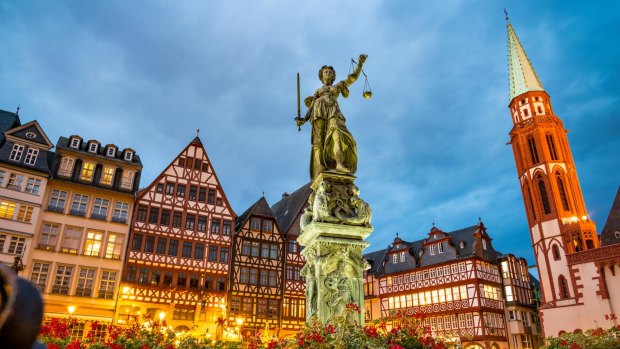
Berlin alternative: Romerberg Square in Frankfurt's Old Town.Credit: Shutterstock
Once upon a time, in a far quieter era, you could wander insouciant into the Louvre and press your nose against Mona Lisa's oils. The famous painting just hung on a peg among all the other art. In fact, in 1911 petty Italian thief Vincenzo Peruggia simply unhooked it and walked away. Mona Lisa was gone for two years.
These days, the eyebrow-less Italian sits behind bulletproof glass in a bunker-like room designed for crowd control. Acoustic panels dampen visitors' shrieks of recognition. Barriers and security guards prevent up-close appreciation. Millions of tourists file past each year regardless.
Now there's talk of a moving walkway to hustle crowds along. Maybe it could be extended outside, through the Tuileries gardens and up the Champs-Élysées. Paris gets 32 million visitors annually. And it isn't alone in grappling with the enormity of its tourist crush.
Recently there has been a backlash among concerned residents in cities such as Venice, Barcelona, Prague, Dubrovnik and Amsterdam, bemoaning increased prices, ubiquitous souvenir shops and the daily unpleasantness of battling crowds.
Many solutions have been proposed or introduced: limiting hotel rooms, hiking tourist taxes, slapping quotas on visitor numbers, turning away cruise ships, firmer policing of disrespectful behaviour.
If this puts you off visiting Europe, it shouldn't. Animosity against tourists isn't widespread and besides, most tourists have a sheep-like herd instinct. Abandon Mona Lisa and you'll find whole Louvre rooms full of wonderful art – and almost entirely empty. Step from one street into another to find yourself in a different environment. Hunt down interesting neighbourhoods and discover that local life continues, even in Paris.
Then again, you could spend less time in big-name destinations and more in secondary cities which are often just as enjoyable. Here are eight fine alternatives. True, you'll still see tourists in abundance, but they aren't likely to be gliding past on a moving walkway any time soon.
FRANCE
CROWDED CHOICE Paris: 32 million visitors annually.
UNCROWDED CHOICE Lyon: 6 million visitors annually.
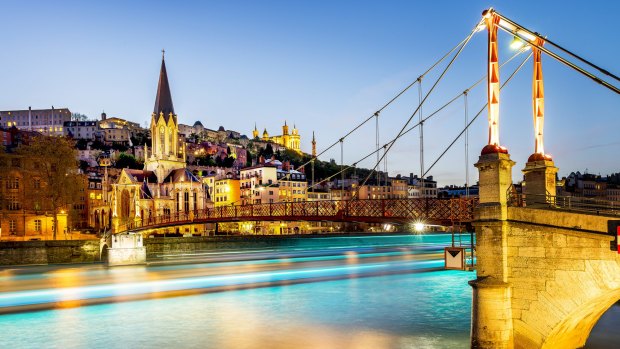
WHY AND WHEN TO GO Lyon is an attractive city of riverfronts, medieval streets, and cafe-cluttered squares that encourage lingering. Less hurried and more laidback than Paris, it hints of the more bohemian south. Even better, Lyon is the gastronomic capital of France. Go in winter, cold but dry and almost tourist-free, before skiing in the nearby French Alps.
DON'T MISS Hillside Fourviere has a Roman amphitheatre and basilica gleaming with Byzantine-style mosaics. Old town St-Jean is World Heritage listed for its French Gothic and Italian Renaissance architecture; adjacent St-Georges has fewer tourists. The 19th-century city between Saone and Rhone rivers has fine squares and boutique shopping. No queues at Musee des Beaux-Arts, the biggest Impressionist collection outside Paris.
HOW TO GET THERE Two hours on the high-speed train from Paris or Geneva.
MORE lyon-france.com
ITALY
CROWDED CHOICE Venice: 30 million visitors annually.
UNCROWDED CHOICE Bologna: 7 million airport arrivals annually.
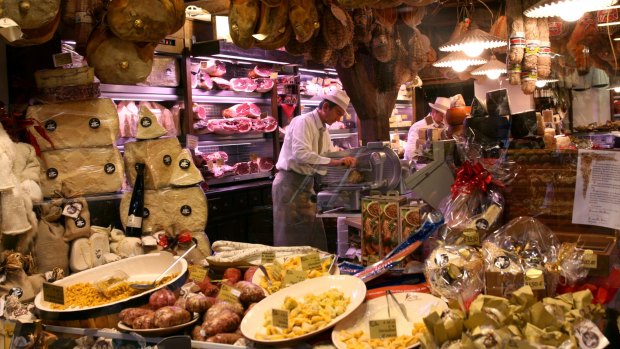
WHY AND WHEN TO GO Venice's old-town population of 55,000 is overwhelmed by tourists. Bologna, though busy in season, retains its everyday life thanks partly to its 80,000-strong student population. Italy's top gastronomic destination has an agreeable red-brick old town of colonnaded squares. Go in shoulder-season March or April for warm, sunny weather; December has fine Christmas markets.
DON'T MISS Piazza Maggiore is the heart of the old town, with a lively university district to the south, food-filled alleyways to the east, and interesting churches and medieval towers. The university has a magnificent 1637 anatomical theatre and good museum. Pinacoteca Nazionale allows you to view Italian masters without peering over a herd of heads.
HOW TO GET THERE Emirates has direct flights to Bologna, just over an hour by train from Venice.
MORE bolognawelcome.com
NETHERLANDS
CROWDED CHOICE Amsterdam: 15 million visitors annually.
UNCROWDED CHOICE Utrecht: 4 million visitors annually.
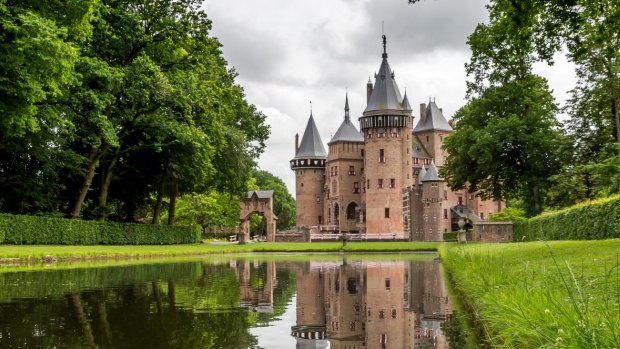
How is the Netherland's fourth-largest city so little known? It's a relaxed alternative to Amsterdam, with similar architecture and canals but none of the tourist tat or crowds. It has several notable (northern) summer music festivals and an autumn film festival. Otherwise, try for March-April, which is chilly but often dry and sunny.Credit: Shutterstock
DON'T MISS Hoof to the top of the 700-year-old Dom Tower for splendid views onto the gabled merchants' houses and narrow canals of this quaint but buzzing city. Compact and mostly pedestrian (though cyclists are everywhere), Utrecht is easily walked, with architectural treats and antiques dealers on every corner, and several splendid castles in the surrounding countryside.
HOW TO GET THERE An hour's train ride from Schiphol airport, and just a half-hour from central Amsterdam.
MORE visit-utrecht.com
SPAIN
CROWDED CHOICE Barcelona: 9 million visitors annually.
UNCROWDED CHOICE Valencia: 2 million visitors annually.
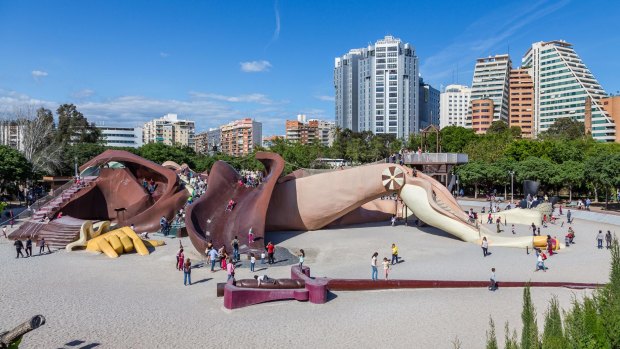
Credit: Shutterstock
WHY AND WHEN TO GO Valencia, Spain's third-largest city, placed itself on the contemporary architecture map with its eye-popping science museum, aquarium and opera house, and also pushes the boundaries with inventive restaurants. Great shopping and streets lively with locals rather than just tourists are other reasons to linger. April and May have warm weather and fewer visitors.
DON'T MISS Walk the city centre for medieval buildings, art deco apartments, the languid curve of Turia Gardens, and streets raucous with cafes and football-kicking kids. The cathedral is a Spanish Gothic glory, Museo de Bellas Artes has a good range of Spanish painters, and Mercado Central is one of the country's best food markets.
HOW TO GET THERE Valencia is a four-hour train ride from Barcelona; its airport is served by numerous European airlines.
MORE visitvalencia.com
GERMANY
CROWDED CHOICE Berlin: 14 million visitors annually.
UNCROWDED CHOICE Frankfurt: 3 million visitors annually.

Credit: Shutterstock
WHY AND WHEN TO GO Frankfurt flies under the radar and yet is an attractive, cosmopolitan city of trendy neighbourhoods and contemporary culture, known in Germany for great dining, nightlife and museums. September is an excellent month to visit, when summer festivals finish and hotel bargains result – though check your exact timing, as Frankfurt is a big congress destination.
DON'T MISS An entire museums quarter – one of the Europe's best – lines the banks of the Main River, providing access to Impressionist paintings, the relics of ancient civilisations and Renaissance masterpieces. Several parks, an agreeable (mostly reconstructed) old town and Goethe's residence are other attractions. Shopping is terrific; Zeil might be Germany's best luxury shopping street.
HOW TO GET THERE Emirates, Etihad, Qatar Airways, Singapore Airlines and Thai Airways are among airlines serving Frankfurt.
AUSTRIA
CROWDED CHOICE Vienna: 7 million visitors annually.
UNCROWDED CHOICE Graz: 650,000 visitors annually.
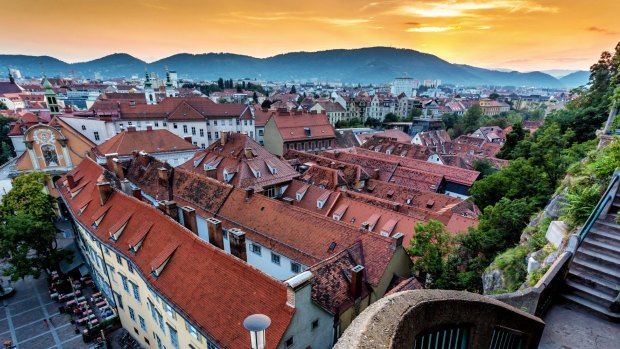
Credit: Shutterstock
WHY AND WHEN TO GO Provincial capital Graz is Austria's second-largest but little-known city, wedged into verdant, rolling countryside. With a population of 270,000 it's pleasantly laidback, without any of Vienna's pretensions or conservatism, yet it has enough imperial history and cultural life to be interesting. Northern spring is peak tourism season (such as it is) and the summer wet, so try for autumn.
DON'T MISS The Renaissance old town is lived-in and threaded through with shopping streets such as Herrengasse and Sporgasse. Walking paths and battlements above on Schlossberg rock provide impressive views. The Styrian Armoury – the world's largest collection of arms and armour – is surprisingly interesting. The landmark Kunsthaus Graz art centre is nicknamed the Friendly Alien for its startling appearance.
HOW TO GET THERE Graz is a scenic 2½-hour train ride from Vienna.
MORE graztourismus.at
CROATIA
CROWDED CHOICE Dubrovnik: 2 million visitors annually.
UNCROWDED CHOICE Split: 600,000 visitors annually.
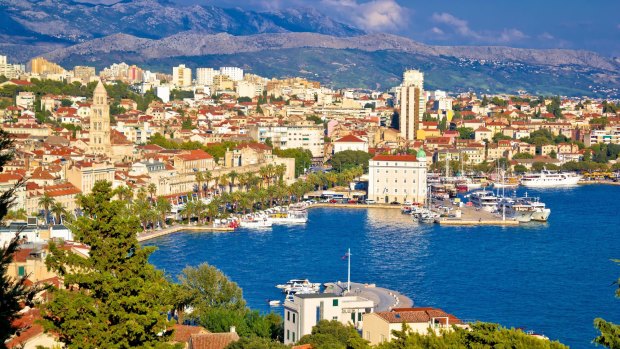
Credit: Shutterstock
WHY AND WHEN TO GO Dubrovnik old town is souvenir-shop central and inundated when cruise ships dock. Split is a real, functioning seaport and modern city whose waterfront promenades are lively with markets, restaurants and sunset-watching locals. Northern winter can be surprisingly enjoyable, with big New Year celebrations, several festivals such as February's carnival, and few tourists.
DON'T MISS Roman emperor Diocletian built a palace here in 305, so massive it became Split's old town, carbuncled with further Renaissance and Venetian layers of architecture and now crammed with bars, eateries and gelato shops. Mestrovic Gallery, dedicated to a Croatian sculptor, merits three stars, and the Modern Art Gallery features interesting Croatian artists.
HOW TO GET THERE Numerous low-cost airlines fly from across Europe to Split, which is three hours by road north of Dubrovnik.
MORE visitsplit.com
IRELAND
CROWDED CHOICE Dublin: 6 million visitors annually.
UNCROWDED CHOICE Galway: 1.5 million visitors annually.
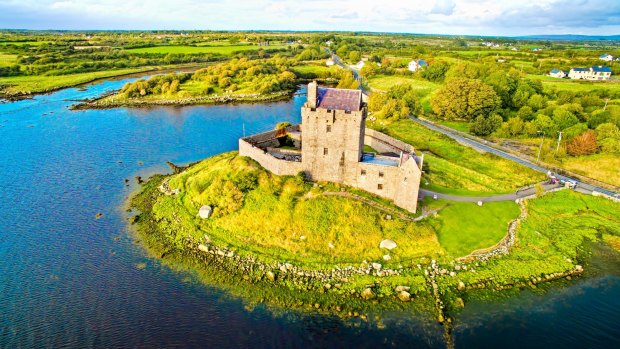
Credit: Shutterstock
WHY AND WHEN TO GO Despite its small size, some say arty Galway is Ireland's best city thanks to its charm, cosmopolitan air and energy – it has a sizeable university-student population. Unlike Dublin, it sits amid beautiful, haunting scenery, including the Aran Islands and Connemara, closely linked to Irish culture, language and literary heritage. May has warm weather and least rainfall.
DON'T MISS Wander alleyways half a millennium old to find little churches, cosy seafood eateries and antiques shops. Then hit the Latin Quarter to join traditional singers and fiddlers over a pub Guinness or two. Kids will enjoy the national aquarium and the medieval mummery of nearby Dunguaire Castle. Horseracing at Galway Racecourse is some of Europe's best.
HOW TO GET THERE Galway is 2½ hours west on the motorway from Dublin.
MORE ireland.com
CROWD CONTROL: SWAP ONE COUNTRYFOR ANOTHER
Over 300 million tourists visit France, Italy, Spain, Germany and Croatia each year. Our five alternatives lure a modest 36 million visitors, though there's nothing modest about their attractions.
INSTEAD OF FRANCE, TRY BELGIUM
Belgium is easily accessible from the rest of Europe and has superlative public transport. Its chocolate and beer are far better than in France and the food is just as good (and a little more down-to-earth). There are lots of captivating art museums; Flemish painters were famous long before the Impressionists. Like Normandy, it has history related to World War I and Australia's role in it. Antwerp, Brussels, Bruges and Ghent are historical gems, compact enough to walk around, agreeably friendly, and built to feel cosy rather than intimidate.
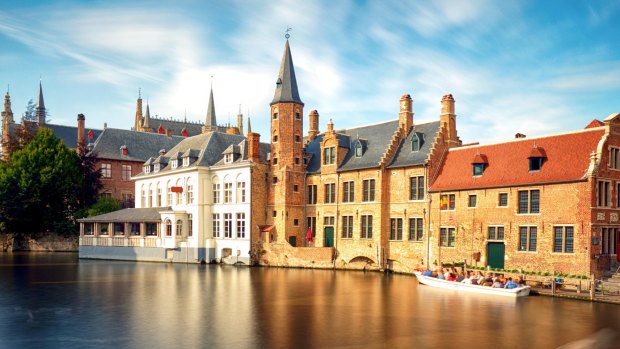
Credit: Shutterstock
INSTEAD OF SPAIN, TRY PORTUGAL
Do the maths: Spain gets 75 million visitors annually, Portugal about 10 million. That's still plenty, but most tourists huddle in concrete seaside resorts and are easily avoided. The country's rugged Atlantic coastline is far more scenic than Spain's Mediterranean, and Portugal generally has lower prices, better seafood and less searing weather. You still get 2000 years of history, lots of sunshine, a Latinate temperament and a crumbling imperial heritage in culture-dense cities such as Lisbon, Porto and Braga. Portugal is a great country for hiking, golf, fishing and wine, too.
INSTEAD OF ITALY, TRY SLOVENIA
Slovenia's short Adriatic coastline is Italy without the crush. Working port Koper conceals a Gothic old town centred on Titov Square, which is surrounded by Venetian-era arcades and fine old buildings. A large Italian community gives it a lively, bilingual appeal. Further south, former Venetian salt-trading port Piran sits on a sea-washed peninsula and boasts pastel-pretty facades and medieval towers on which winged Venetian lions perch. As an added bonus, Slovenia offers the beautiful Julian Alps, youthful and energetic capital Ljubljana, and rolling eastern plains dotted with castles.
INSTEAD OF CROATIA, TRY MONTENEGRO
This compact Mediterranean nation has one of the most scenic, serpentine coastlines in the entire Mediterranean, culminating in the fiord-like Bay of Kotor, which hides World Heritage Kotor, a fortified town crammed with churches and statues. Budva is another impressive coastal town, dating back to Phoenician times. Inland, you'll find highlands carved with canyons, of which Tara Canyon is Europe's largest. Orthodox, Catholic and Muslim cultures mix. Go now: Montenegro has recently attracted more flights and swanky international hotel and restaurant chains, moving it firmly from trailblazing into the mainstream.
INSTEAD OF GERMANY, TRY ROMANIA
Germany gets 20 times the visitors of Romania, which remains one of Europe's cheapest, least crowded destinations and yet still has a depth of history, Dracula legends, diverse architecture, natural beauty and lovely towns such as Brasov, Sibiu and Sighisoara, all freshly renovated after decades of Communist-era stagnation. There's even a significant German influence on its history: the Saxon settlements that dot Transylvania could be straight from a Brothers Grimm illustration. A Roman-based alphabet and Latin-based language make communication somewhat easier than elsewhere in Eastern Europe.
PRESSURE POINTS: HOW TO TACKLE THE BIG CITIES
Fair enough, we all want to visit Europe's big cities, and rightly so. But even in the continent's busiest destinations, it's still possible to find local atmosphere and alternative sights.
PARIS
Tone down the tourist paraphernalia (goodbye baseball cap), dress smart-casual and learn basic French greetings – a must as you enter and depart shops – and you'll find Parisians more forthcoming. Swap busy Montmartre for trendy South Pigalle, avoid the Champs-Elysees for rue Saint-Honore, and explore quieter gardens such as Buttes-Chaumont. Forget the Louvre: Paris has fabulous, less frequented museums including the Moyen Age (medieval art) and Carnavalet (Paris through the ages). The bars and eateries of riverside Quai Francois-Mauriac swarm with locals on summer evenings.

Credit: Shutterstock
ROME
Winter is a good time to visit: theatres, jazz venues and opera house are in full swing, and queues thin at tourist sites. At any time, Galleria Doria Pamphili provides a brilliant collection of European art without crowds. Trinfale market in Prati district is a genuine local food market. As night falls, up-and-coming Trastevere district is alive with funky shops and taverns where nattering locals enjoy fish stew cooked in white wine, or fine potato gnocchi. Student, arty and alternative San Lorenzo district is also fun.
BARCELONA
Stop buying souvenirs – locals lament the replacement of local businesses with souvenir shops – and, instead of photographing market food, buy it instead. Sant Andreu market is far less touristy than famous La Boqueria. Don't get rowdy like British stag-party revellers and you'll find reports of tourist hostility greatly exaggerated. Wander from the city centre into Poble Sec, Sarria and Gracia districts. Even downtown, it isn't hard to step away from the herd. Just look up and enjoy: this is one of the world's most architecturally attractive cities.
AMSTERDAM
Go beyond the city core to De Pijp district, which has great street markets and ethnic restaurants where you can try rijstaffel, the much-loved Indonesian-Dutch feast of multiple little dishes. De Wallen district is home to patrician Golden Age mansions and Amsterdam University. Check out former port area Eastern Harbour, where huge redevelopment projects are creating a whole new city. If you can brave the weather, classical concerts fill halls and churches with music in winter, and the opera and ballet seasons open.
VENICE
There are 118 islands linked by 400 bridges in Venice, and endless winding alleyways: don't worry about getting lost, and you might lose the tourist hordes. Lovely streets around the Arsenale are surprisingly quiet, and Cannaregio district still has a neighbourhood feel. Those who wander late at night will also be rewarded. Don't arrive on cruise mega-ships: locals hate them, and their wash damages foundations. Don't block bridges with picnics or selfies. Do head into churches: many hold extraordinary artworks as tourists walk on by.
Sign up for the Traveller Deals newsletter
Get exclusive travel deals delivered straight to your inbox. Sign up now.